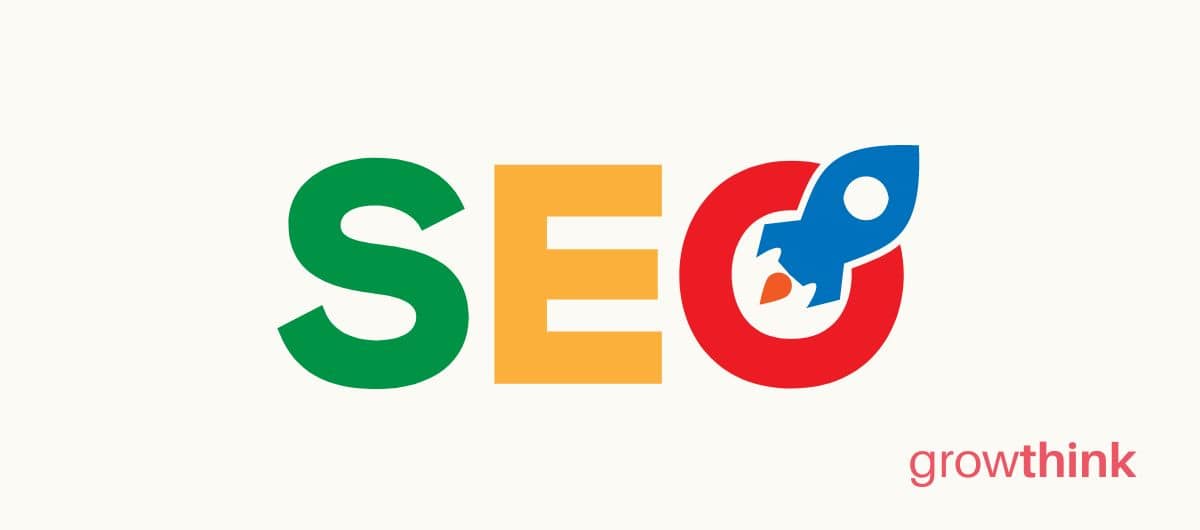Over the past 20+ years, we have helped over 1,000 entrepreneurs and business owners create business plans to start and grow their freelance writing companies.
If you’re unfamiliar with creating a freelance writing business plan, you may think creating one will be a time-consuming and frustrating process. For most entrepreneurs it is, but for you, it won’t be since we’re here to help. We have the experience, resources, and knowledge to help you create a great business plan.
In this article, you will learn some background information on why business planning is important. Then, you will learn how to write a freelance writing business plan step-by-step so you can create your plan today.
What is a Freelance Writing Business Plan?
A business plan provides a snapshot of your freelance writing business as it stands today, and lays out your growth plan for the next five years. It explains your business goals and your strategies for reaching them. It also includes market research to support your plans.
Why You Need a Business Plan for a Freelance Writing Business
If you’re looking to start a freelance writing business or grow your existing freelance writing company, you need a business plan. A business plan will help you raise funding, if needed, and plan out the growth of your freelance writing business to improve your chances of success. Your freelance writing business plan is a living document that should be updated annually as your company grows and changes.
Sources of Funding for Freelance Writing Businesses
With regard to funding, the main sources of funding for a freelance writing business are personal savings, credit cards, bank loans, and angel investors. When it comes to bank loans, banks will want to review your business plan and gain confidence that you will be able to repay your loan and interest. To acquire this confidence, the loan officer will not only want to ensure that your financials are reasonable, but they will also want to see a professional plan. Such a plan will give them the confidence that you can successfully and professionally operate a business. Personal savings and bank loans are the most common funding paths for freelance writing companies.
Finish Your Business Plan Today!
If you’d like to quickly and easily complete your business plan, download Growthink’s Ultimate Business Plan Template and complete your plan and financial model in hours.
How to Write a Business Plan for a Freelance Writing Business
If you want to start a freelance writing business or expand your current freelance writing business, you need a business plan. The guide below details the necessary information for how to write each essential component of your freelance writing business plan.
Executive Summary
Your executive summary provides an introduction to your business plan, but it is normally the last section you write because it provides a summary of each key section of your plan.
The goal of your executive summary is to quickly engage the reader. Explain to them the kind of freelance writing business you are running and the status. For example, are you a startup, do you have a freelance writing business that you would like to grow, or are you operating freelance writing and formatting businesses?
Next, provide an overview of each of the subsequent sections of your plan.
- Give a brief overview of the freelance writing industry.
- Discuss the type of freelance writing business you are operating.
- Detail your direct competitors. Give an overview of your target customers.
- Provide a snapshot of your marketing strategy. Identify the key members of your team.
- Offer an overview of your financial plan.
Company Overview
In your company overview, you will detail the type of freelance writing business you are operating.
For example, you might specialize in one of the following types of freelance writing businesses:
- Copywriting: Copywriting is focused on marketing materials to encourage a target audience to make a purchase; it is compelling and focused writing that leads consumers to a decision.
- Grant writing: Grant writing is focused on the art of persuasion, typically noting the needs of a non-profit company and then offering the solution via the services or products of the non-profit company. Grant writing requires research and a storyline that compels readers to provide funding for worthy public or private projects.
- Technical freelance writing: A technical freelance writer is focused on user manuals, product documentation, and instructional guides. This type of writing demands expertise in vocabulary and precision in writing.
- Resume/Cover Letter freelance writing: One of the major reasons freelance writers are hired is the on-going need for creative, yet comprehensive resumes and/or cover letters. Almost every person seeking employment today will look for a writer to take on the task of creating compelling content in the form of a winning resume.
In addition to explaining the type of freelance writing business you will operate, the company overview needs to provide background on the business.
Include answers to questions such as:
- When and why did you start the business?
- What milestones have you achieved to date? Milestones could include the number of customers served, the amount of revenue during the past six months, opening a design and formatting business to support the freelance writing business, etc.
- Your legal business structure. Are you incorporated as an S-Corp? An LLC? A sole proprietorship? Explain your legal structure here.
Industry Analysis
In your industry or market analysis, you need to provide an overview of the freelance writing industry.
While this may seem unnecessary, it serves multiple purposes.
First, researching the freelance writing industry educates you. It helps you understand the market in which you are operating.
Secondly, market research can improve your marketing strategy, particularly if your analysis identifies market trends.
The third reason is to prove to readers that you are an expert in your industry. By conducting the research and presenting it in your plan, you achieve just that.
The following questions should be answered in the industry analysis section of your freelance writing business plan:
- How big is the freelance writing industry (in dollars)?
- Is the market declining or increasing?
- Who are the key competitors in the market?
- Who are the key suppliers in the market?
- What trends are affecting the industry?
- What is the industry’s growth forecast over the next 5 – 10 years?
- What is the relevant market size? That is, how big is the potential target market for your freelance writing business? You can extrapolate such a figure by assessing the size of the market in the entire country and then applying that figure to your local population.
Customer Analysis
The customer analysis section of your freelance writing business plan must detail the customers you serve and/or expect to serve.
The following are examples of customer segments: individuals, businesses, charitable foundations and government agencies.
As you can imagine, the customer segment(s) you choose will have a great impact on the type of freelance writing business you operate. Clearly, individuals would respond to different marketing promotions than government agencies, for example.
Try to break out your target customers in terms of their demographic and psychographic profiles. With regard to demographics, including a discussion of the ages, genders, locations, and income levels of the potential customers you seek to serve.
Psychographic profiles explain the wants and needs of your target customers. The more you can recognize and define these needs, the better you will do in attracting and retaining your customers.
Finish Your Freelance Writing Business Plan in 1 Day!
Don’t you wish there was a faster, easier way to finish your business plan?
With Growthink’s Ultimate Business Plan Template you can finish your plan in just 8 hours or less!
Click here to finish your Freelance Writing business plan today.
Competitive Analysis
Your competitive analysis should identify the indirect and direct competitors your business faces and then focus on the latter.
Direct competitors are other freelance writing businesses.
Indirect competitors are other options that customers have to purchase from that aren’t directly competing with your product or service. This includes companies that provide templates, forms, or computer-generated materials. You need to mention such competition, as well.
For each direct competitor, provide an overview of their business and document their strengths and weaknesses. Unless you once worked at your competitors’ businesses, it will be impossible to know everything about them. But you should be able to find out key things about them such as
- What types of customers do they serve?
- What type of freelance writing business are they?
- What is their pricing (premium, low, etc.)?
- What sets their business apart from others?
- What are their weaknesses?
With regard to the last two questions, think about your answers from the customers’ perspective. And, don’t be afraid to ask your competitors’ customers what they like most and least about them.
The final part of your competitive analysis section is to document your areas of competitive advantage. For example:
- Will you provide options for 24/7 service or 2-hour turnaround times?
- Will you offer products or services that your competition doesn’t?
- Will you provide better customer service?
- Will you offer better pricing?
Think about ways you will outperform your competition and document them in this section of your plan.
Marketing Plan
Traditionally, a marketing plan includes the four P’s: Product, Price, Place, and Promotion. For a freelance writing business plan, your marketing strategy should include the following:
Product: In the product section, you should reiterate the type of freelance writing company that you documented in your company overview. Then, detail the specific products or services you will be offering. For example, will you provide full-package curriculum vitae completion for C-suite executives?
Price: Document the prices you will offer and how they compare to your competitors. Essentially in the product and price sub-sections of your plan, you are presenting the services you offer and their prices.
Place: Place refers to the site of your freelance writing company. Document where your company is situated and mention how the site will impact your success. For example, is your freelance writing business located in a corporate complex where customers can meet in-person with you to discuss projects? Discuss how your site might be the ideal location for your customers.
Promotions: The final part of your freelance writing marketing plan is where you will document how you will drive potential customers to your location(s). The following are some promotional methods you might consider:
- Advertise in local papers and/or magazines
- Reach out to websites
- Distribute direct mail pieces to your target audience
- Engage in email marketing
- Advertise on social media platforms
- Improve the SEO (search engine optimization) with target keywords on your website
Finish Your Business Plan Today!
If you’d like to quickly and easily complete your business plan, download Growthink’s Ultimate Business Plan Template and complete your plan and financial model in hours.
Operations Plan
While the earlier sections of your business plan explained your goals, your operations plan describes how you will meet them. Your operations plan should have two distinct sections as follows.
Everyday short-term processes include all of the tasks involved in running your freelance writing business, including answering calls, planning and researching subject matter, paying invoices, contacting customers, etc.
Long-term goals are the milestones you hope to achieve. These could include the dates when you expect to reach $X in revenue. It could also be when you expect to expand your freelance writing business to a second resume-writing service.
Management Team
To demonstrate your freelance writing business’ potential to succeed, a strong management team is essential. Highlight your key players’ backgrounds, emphasizing those skills and experiences that prove their ability to grow a company.
Ideally, you and/or your team members have direct experience in managing freelance writing businesses. If so, highlight this experience and expertise. But, also highlight any experience that you think will help your business succeed.
If your team is lacking, consider assembling an advisory board. An advisory board would include 2 to 8 individuals who would act as mentors to your business. They would help answer questions and provide strategic guidance. If needed, look for advisory board members with experience in managing a freelance writing business or successfully running a copywriting department in a large corporation.
Financial Plan
Your financial plan should include your 5-year financial statement broken out both monthly or quarterly for the first year and then annually. Your financial statements include your income statement, balance sheet, and cash flow statements.
Income Statement
An income statement is more commonly called a Profit and Loss statement or P&L. It shows your revenue and then subtracts your costs to show whether you turned a profit or not.
In developing your income statement, you need to devise assumptions. For example, will you serve more than ten customers per month, and/or offer special pricing for projects over 20,000 pages in length? And will sales grow by 2% or 10% per year? As you can imagine, your choice of assumptions will greatly impact the financial forecasts for your business. As much as possible, conduct research to try to root your assumptions in reality.
Balance Sheets
Balance sheets show your assets and liabilities. While balance sheets can include much information, try to simplify them to the key items you need to know about. For instance, if you spend $50,000 on building out your freelance writing business, this will not give you immediate profits. Rather it is an asset that will hopefully help you generate profits for years to come. Likewise, if a lender writes you a check for $50,000, you don’t need to pay it back immediately. Rather, that is a liability you will pay back over time.
Cash Flow Statement
Your cash flow statement will help determine how much money you need to start or grow your business, and ensure you never run out of money. What most entrepreneurs and business owners don’t realize is that you can turn a profit, but run out of money and go bankrupt.
When creating your Income Statement and Balance Sheets be sure to include several of the key costs needed in starting or growing a freelance writing business:
- Cost of computer and printer equipment
- Cost of furnishings
- Payroll or salaries paid to staff
- Business insurance
- Taxes
- Other start-up expenses (if you’re a new business) like legal expenses, permits, computer software, office supplies and equipment
Appendix
Attach your full financial projections in the appendix of your plan, along with any supporting documents that make your plan more compelling. For example, you might include your office location lease or a list of high-profile resources you can access and include in your writing categories.
Summary
Writing a business plan for your freelance writing business is a worthwhile endeavor. If you follow the template above, by the time you are done, you will truly be an expert. You will understand the freelance writing industry, your competition, and your customers. You will develop a marketing strategy and will understand what it takes to launch and grow a successful freelance writing business.
Finish Your Freelance Writing Business Plan in 1 Day!
Don’t you wish there was a faster, easier way to finish your Freelance Writing business plan?
With Growthink’s Ultimate Business Plan Template you can finish your plan in just 8 hours or less!
Click here to finish your Freelance Writing business plan today.
OR, Let Us Develop Your Plan For You
Since 1999, Growthink has developed business plans for thousands of companies who have gone on to achieve tremendous success.
Click here to see how Growthink’s business planning advisors can create your business plan for you.
Other Helpful Business Plan Articles & Templates


 Digital Marketing Agency Business Plan Template
Digital Marketing Agency Business Plan Template SEO Business Plan Template
SEO Business Plan Template Social Media Marketing Business Plan Template
Social Media Marketing Business Plan Template